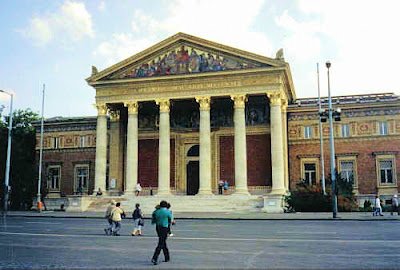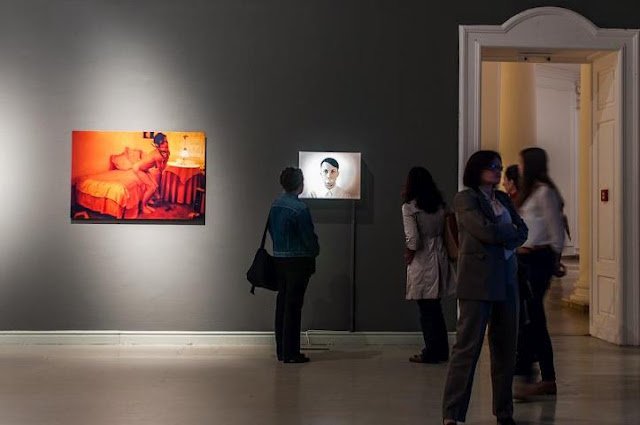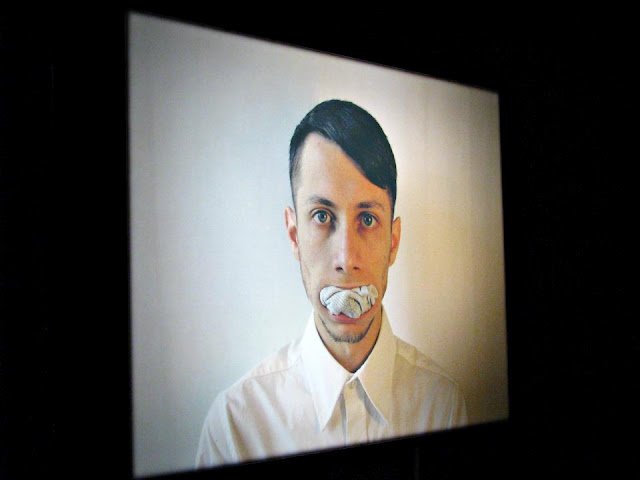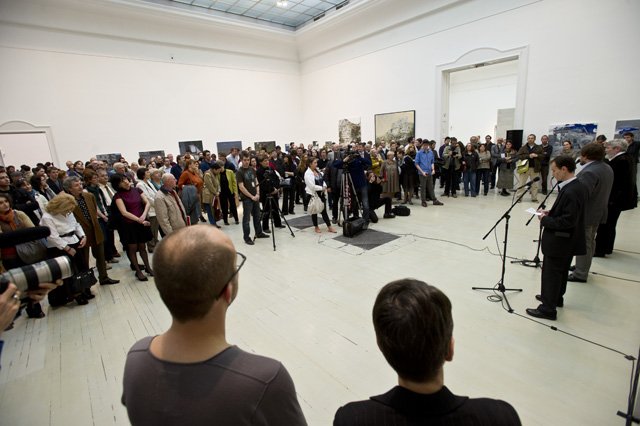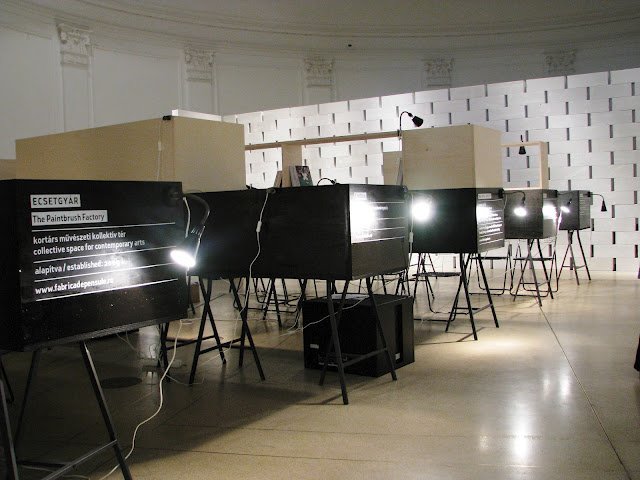ALEX MIRUTZIU : WHAT IS THE REALITY OF NEVER?
27 mai – 12 iunie 2012
Studioul Luciei Fontaine, Iaspis, Maria Skolgata 83, Stockholm
Vernisaj duminică, 27 mai, ora 18.00
Performance de Alex Mirutziu: Five moments of Silence for Pending Work #7
Institutul Cultural Român de la Stockholm şi Lucie Fontaine prezintă prima expoziţie individuală a artistului Alex Mirutziu în Suedia, găzduită de Lucie Fontaine în studioul său de la Iaspis, transformat într-un satelit al spaţiului expoziţional pe care aceasta îl conduce în Milano. Expoziţia “What is the Reality of Never?” prezintă o selecţie de lucrări ale artistului Alex Mirutziu, incluzând performance-ul Five moments of Silence for Pending Work #7, ce va fi prezentat în premieră la vernisaj. Performance-ul este acompaniat de următorul discurs:
Pending works reside in few answering curves of theory. They are irreducible to any medium and their room is multifaceted and complex. This body of work explores the idea of classicism and the establishment of drama, stressing how the work makes it or doesn’t make it through the play, buffering in the instantaneous present.
There are two important conceptual triggers related to the pending works machinery. The first question is the reliability of the event and its performativity within a fluctuating timeline. The second refers to the cathexis of time and action versus duration, anti-duration and political evidence. Ultimately the chief interest of the pending works lies in the dialectic between evidence and the event as transformative of each other. (Alex Mirutziu)
Interesul lui Alex Mirutziu pentru performance şi instalaţii a dus la crearea unui teren ontologic în cadrul lucrărilor din seria Pending Works and Scotopolitic Objects. Mirutziu este primul artist care a format un colectiv cu un hiper-obiect şi anume artistul însuşi, aflat la vârsta de 29 de ani. The Artist and Himself at 29 subliniază încă o data înclinaţia lui Mirutziu pentru studiul existenţei, lucrările sale opunându-se limitărilor prezente prin încercarea de a defini realitatea infinitului temporal.
Alex Mirutziu: What is the Reality of Never? este parte a proiectului Body of Work dezvoltat de Lucie Fontaine în colaborare cu Iaspis. Pe parcursul rezidenţei sale la Iaspis, Lucie Fontaine găzduieşte o serie de discuţii şi va organiza o serie de expoziţii având la bază teme precum condiţia autorului şi autenticitatea operei de artă. Toate activităţile vor avea loc la Iaspis, Maria Skolgata 83, Stockholm, în studioul Luciei Fontaine. Anterior expoziţiei lui Alex Mirutziu Lucie Fontaine mai organizează proiecte şi discuţii cu Agnieszka Kurant, Claire Fontaine, Daniella Isamit Morales, Alice Tomaselli & Alice Mandelli şi Josefine Wikström.
Alex Mirutziu (n. 1981) locuieşte şi lucrează la Sibiu, România. În 2011 a avut o rezidenţă la The Glass Factory, Boda Glasbruk, Suedia, unde a colaborat cu artista suedeză Åsa Jungnelius. A avut expoziţii personale la Barbara Seiler Galerie, Zurich (2011), Mihai Nicodim Gallery, Los Angeles (2010), Galerie Rüdiger Schöttle, Munchen (2010) şi Galeria Sabot, Cluj-Napoca (2009). În prezent participă la expoziţia de grup “European Travelers – Art from Cluj Today” de la centrul de artă Műcsarnok din Budapesta.
Lucie Fontaine este un personaj fictiv în numele căruia acţionează un grup de artişti, curatori, colecţionari, editori şi scriitori, ce se autointitulează angajaţi ai Luciei Fontaine, aducând astfel în discuţie problema identităţii artistice. Prin urmare, Lucie Fontaine se prezintă ca un angajator în deomeniul artei, şi prin relaţia cu angajaţii săi, îşi permite să fie activă ca artist, curator, dealer, colecţionar, editor, scriitor etc.
Acest proiect este o colaborare între ICR Stockholm, Lucie Fontaine şi Iaspis.
[EN]
ALEX MIRUTZIU : WHAT IS THE REALITY OF NEVER?
MAY 27 - JUNE 12 2012
Lucie Fontaine and the Romanian Cultural Institute in Stockholm are proud to present the fourth exhibition at Lucie Fontaine’s Stockholm satellite, located at Iaspis, on Maria Skolgata 83. Entitled “What is the reality of never?” the exhibition presents a selection of works by Romanian artist Alex Mirutziu, who for this occasion will perform a new work entitled Five moments of Silence for Pending Work #7 (2012). The performance is accompanied by the following synopsis:
Pending works reside in few answering curves of theory. They are irreducible to any medium and their room is multifaceted and complex. This body of work explores the idea of classicism and the establishment of drama, stressing how the work makes it or doesn’t make it through the play, buffering in the instantaneous present.
There are two important conceptual triggers related to the pending works machinery. The first question is the reliability of the event and its performativity within a fluctuating timeline. The second refers to the cathexis of time and action versus duration, anti-duration and political evidence. Ultimately the chief interest of the pending works lies in the dialectic between evidence and the event as transformative of each other.
On one hand the artist’s extensive engagement with performance and installations aims to open an ontological terrain inside his so-called “Pending Works and Scotopolitic Objects.” He is the only artist to have made a group with a hyper-object, namely with himself at 29 and exhibit as a collective for the first time at Barbara Seiler Gallery in Zurich. The artist and himself at 29 is a medium. None is superior to the other and none can comprehend the fullness of atoms that shape each other. The biggest question is who arrived at whom first, faster or even at all? The question therefore rests upon distance. Is there any distance separating them? Can there be a possible distance between them, or is the artist at 29 years old collapsing into the artist now? Considering these projects one of the critical aspects in his work is that it resists closure by asking: What is the reality of never?
Alex Mirutziu is an artist based in Sibiu, Romania. He had solo shows at Barbara Seiler Galerie, Zurich (2011), Mihai Nicodim Gallery, Los Angeles (2010), Galerie Rüdiger Schöttle, Munich (2010) and Galeria Sabot, Cluj-Napoca, Romania (2009). His work is included in “European Travelers – Art from Cluj Today,” currently on view at Műcsarnok | Kusthalle Budapest.
The show is made possible through the support of Iaspis and the Romanian Cultural Institute in Stockholm. If you need further information please contact Lucie Fontaine’s employees: employee@luciefontaine.com.






